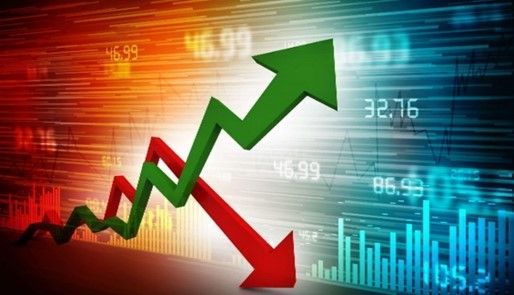The stock market never stays still. Market indexes see gains and losses daily—in more settled periods, the S&P 500 gains or loses less than 1% daily. But from time to time, the market experiences dramatic price changes, a phenomenon that’s known as “volatility.”
While heightened volatility can be a sign of trouble, it’s all but inevitable in long-term investing—and it may be one of the keys to investing success.
Volatility Definition
Market volatility is the frequency and magnitude of price movements, up or down. The bigger and more frequent the price swings, the more volatile the market is said to be.
“Market volatility is a normal part of investing and is to be expected in a portfolio,” says Nicole Gopoian Wirick, CFP, founder of Prosperity Wealth Strategies in Birmingham, Mich. “if markets went straight up, then investing would be easy, and we’d all be rich.”
How Is Market Volatility Measured?
Market volatility is measured by finding the standard deviation of price changes over some time. The statistical concept of a standard deviation allows you to see how much something differs from an average value.
We’ll show you how to calculate it below, but for now, simply keep in mind that “the higher the standard deviation, the more that portfolio is going to move around, up or down from the average,” says Brad Lineberger, CFP, president and founder of Seaside Wealth Management in Carlsbad, Calif.
Standard deviations are important because they tell you how much a value may change and provide a framework for the odds it will happen. Sixty-eight percent of the time, values will be within one standard deviation of the average, 95% of the time, they’ll be within two, and 99.7% of the time, they’ll be within three.
Let’s revisit standard deviations as they apply to market volatility. Traders calculate standard deviations of market values based on end-of-day trading values, changes to values within a trading session—intraday volatility—or projected future changes in values.
Casual market watchers are probably most familiar with that last method, which is used by the Chicago Board Options Exchange’s Volatility Index, commonly referred to as the VIX.
By understanding how volatility works, you can put yourself in a better position to evaluate stock market conditions as a whole. You can then analyze the risk involved with any particular security and construct a stock portfolio that is a great fit for your growth objectives and risk tolerance.
Investors need to know that volatility and risk are not the same. For stock traders who look to buy low and sell high every trading day, volatility and risk are deeply intertwined. Volatility also matters for those who may need to sell their equities in a short time frame, such as those who are older and closer to retirement.
For long-term investors who tend to hold equities for many years, the day-to-day movements of those equities need to be understood. Volatility is part of the noise that could come while you allow your investments to compound long into the future.
Long-term investing still involves risks, but those risks are usually related to being wrong about a company’s growth prospects or paying too high a price for that growth — not volatility.
